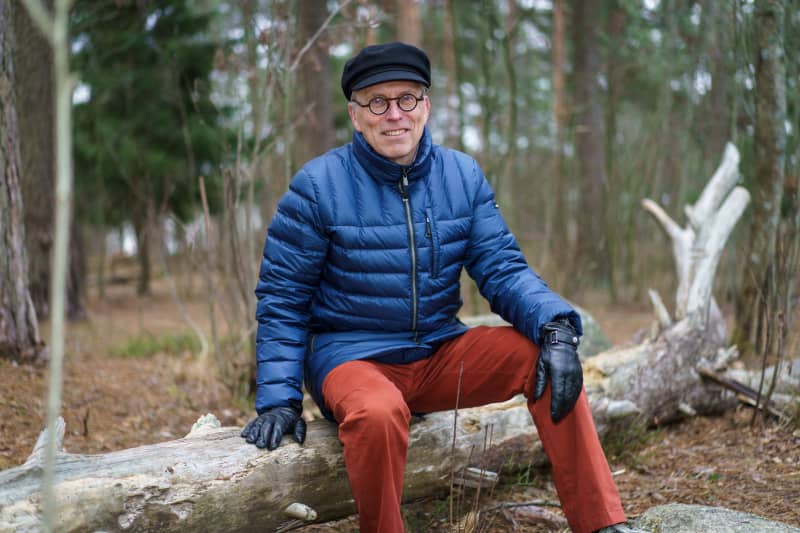
The number of forest stores turned to decline at the end of years of growth. There are clearly more willing buyers than sellers.
In recent years, more than half a million forest owners in Finland have had to get used to the fact that forest trade has had to take place under the shadow of increasing EU regulation. There is a forest strategy.
One would think that forest owners would sell their forests en masse – for fear of \”museumization\” – at a bargain price, but the opposite has happened. Prices have continued to rise steadily and even more expensive than before this year.
The number of forest stores, on the other hand, has turned to a sharp decline at the end of years of growth.
According to Tilli, the EU’s forest measures have not yet affected the plans of the OP forest fund in any way.
– We calmly follow what comes from the EU to practical forestry here. I personally see that the future of the economic use of forests is quite good.
– The global demand for lumber, pulp, cardboard and packaging cardboard looks good. We are confident and we still dare to invest in Finland’s green gold.
OP’s forest fund is one of the biggest buyers of forests in the country. The majority of the fund’s forests are north of the Kouvola-Jyväskylä-Vaasa axis, such as in Kainuu, North Ostrobothnia and North Karelia.
– We do a lot of business, every week. We are buying more than 200 forest farms and about 15,000 hectares this year, says Tilli.
In the attached video, Tilli explains the background to the price development in the forest trade.
Safe from inflation
OP’s Tilli, on the other hand, sees the carry prices of the timber trade partly reflected in the forest farm trade as well.
– Timber trade prices have risen by 10-20 percent this year, which has supported the price of forest farms and perhaps also created price expectations. It will not be sold, but even higher prices are expected, Tilli estimates.
Another reason for the desire to sell is tighter inflation, which weakens the value of money.
– Historically, the forest has provided good inflation protection, and maybe you don’t want to exchange the forest for money. We feel that money is safer in the forest.
Erölä is on the same lines.
\\- When inflation is raging and even if interest rates are rising, the forest is probably a better bank than money in a bank account. Although the yield of the forest is relatively small, it nevertheless offers a relatively stable and secure yield. In the forest, the risks remain small, explains Ärölä.
Expensive in the south, cheap in the north
This year, the average price of a forest hectare in the whole country has increased by 13 percent from last year to almost 3,600 euros. However, the regional differences are large. The most expensive forest is in Uusimaa and Pohjois Savo, and prices have also risen the most this year.
The cheapest forest is still in Lapland, even though prices there have jumped by a fifth since last year. Prices have even dropped in Satakunta and Päijät-Hämee.
The estate sells, the fund buys
– Private individuals are clearly the largest seller group. On average, 20 percent of the sellers are heirs, says Arölä.
According to Tilli, there are many heirs and elderly people among the sellers, whose heirs are not interested in forestry.
– They decide to give up the farm and consider that the money is easier to distribute to the heirs than the forest.
– And one group of sellers has come to the fore this year: farmers in financial trouble. There have been sellers who clearly have an acute cash crisis, Tilli says.
There has been a clear change in forest buyers in recent years. The funds have increased their share. According to Ärölä, the largest group of forest buyers is still private in terms of transaction volume, but in terms of euro volume, funds overtook private individuals already last year. The funds therefore buy large forest farms.
– If measured by surface area, the funds are the largest, and now we are not talking about just forest funds, but all funds. There are also other funds and investment companies that buy forests.

Tricky family deals
When following forest prices and trade volumes, you should remember that they only include the so-called represented by forest stores. So-called relatives’ trades, i.e. between relatives, are not included, even though the vast majority of forest trades are just that.
– Relative trades are difficult from a statistical point of view because the trade often includes fields and buildings in addition to the forest. In addition, part of the property can be handed over as an inheritance or gift, even if it only contains forest, explains Ärölä.
In a transaction containing several types of real estate, the share of the forest in the purchase price is usually not specified, so it cannot then be reliably calculated.
In Ärölä’s opinion, the prices of representative forest trades now recorded in the National Land Survey’s statistics give a good picture of the real development of trade prices.
*What thoughts did the story evoke? You can discuss the topic on 26.11. until 11 p.m.*
